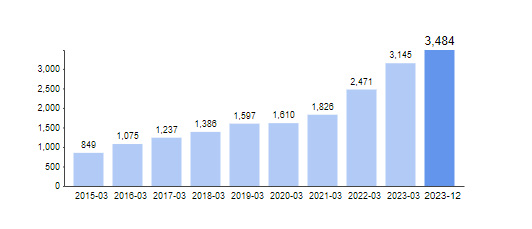20 Best Reasons For Picking Ai Stock Price Predictions
20 Best Reasons For Picking Ai Stock Price Predictions
Blog Article
Top 10 Tips On Automating And Keeping Track Of Stock Trading From Pennies To copyright
Regular monitoring and automation of AI stock trades are crucial to optimize AI trading, especially in volatile markets like copyright and penny stocks. Here are 10 ways to help you automate your trades and to ensure that your performance is maintained through regularly monitoring.
1. Clear Trading Goals
Tips: Determine your trading goals, including your risk tolerance, the expected return and your preferred asset.
The reason: Clearly defined objectives should guide the selection and use of AI algorithms.
2. Trade AI using reliable platforms
TIP: Choose an AI-powered trading platforms that allow for full automation and integration to your broker or currency exchange. Examples include:
For Penny Stocks: MetaTrader, QuantConnect, Alpaca.
For copyright: 3Commas, Cryptohopper, TradeSanta.
What is the reason? Automation success relies on a strong platform as well as ability to execute.
3. Customizable Trading algorithms are the main area of focus
Tip: Create or customize your trading algorithms to suit your strategy.
Why: Customizable algorithms ensure that your strategy matches with your specific trading style whether you're looking at copyright or penny stocks.
4. Automate Risk Management
Tips: Set up automatized risk management tools such as stop-loss order, trailing stop, and take-profit levels.
Why: These safeguards ensure your portfolio is protected from large loss, especially when markets are volatile, such as penny stocks and copyright.
5. Backtest Strategies Before Automation
Test your automated methods back in order to evaluate their performance.
Why? Backtesting allows you to try out the strategy and ensure it has potential. This reduces your risk of poor performances on live markets.
6. Continuously monitor performance and adjust Settings
Tip: Even if your trading is automated, you should continue to track the performance of your account to identify any issues or performance that is not optimal.
What to Track How to track: Slippage, loss of profit and whether algorithm is aligned with market conditions.
Why: Continuous monitoring helps to make quick adjustments when the market conditions change, making sure the strategy is effective.
7. Adaptive Algorithms to Apply
Tip: Choose AI tools that adapt to changing market conditions by altering trading parameters based on real-time data.
Why? Markets change constantly and adaptive algorithms are able to align strategies for penny stock and copyright with new patterns, volatility, or other factors.
8. Avoid Over-Optimization (Overfitting)
A note of caution: Do not overoptimize your automated system using past data. Overfitting could occur (the system performs extremely well in back-tests, but poorly in real-world circumstances).
Why: Overfitting can hinder the ability of an approach to predict future market conditions.
9. AI for Market Analysis
Tip: Use AI to identify abnormal market patterns or other abnormalities in the data (e.g., sudden increases in the volume of trading news sentiment, stock market volatility, or copyright whale activity).
The reason: Being aware of these signals can help you adjust your automated strategies prior to major market moves.
10. Integrate AI to receive regular notifications and alerts
Tip Set up alarms in real-time for market events that are significant, like trade executions or changes in your algorithm’s performance.
Why: Alerts will keep you up to date on market developments that are important to know about, and allow rapid manual intervention if required (especially volatile markets such as copyright).
Bonus Utilize Cloud-Based Solutions to Scalability
Tip: Use cloud-based trading platforms to boost the capacity of your business. They're faster and let you run different strategies at the same time.
Cloud-based solutions let your trading system run 24 hours a day, 7 days a week and without interruption. This is vital for copyright-markets that never shut down.
Automating your trading strategies and ensuring regular monitoring, you can profit from AI-powered copyright and stock trading while minimizing risk and improving overall performance. Take a look at the top best stock analysis website info for blog examples including ai investing app, ai financial advisor, ai stock predictions, ai trading platform, incite, ai stock, ai trading platform, incite, incite ai, stock ai and more. 
Top 10 Tips For Focusing On The Quality Of Data For Ai Stocks, Stock Pickers, Forecasts And Investments
Emphasizing data quality is critical to AI-driven stock selection as well as investment forecasts and predictions. AI models can only be able to make informed decisions when they are backed by high-quality data. Here are 10 suggestions to increase the data quality of AI stock pickers.
1. Prioritize clean, well-structured data
Tips. Be sure to have clean data, that is error-free, and in a format that is constant. It is also important to eliminate duplicates, handling the absence of values and ensuring coherence.
Why is that clean and organized data allows AI models to process information more efficiently, leading to improved predictions and fewer mistakes in decision making.
2. Timeliness of data and real-time data are essential
Tip: Use up-to-date market data that is real-time for predictions, including the price of stocks, trading volumes, earnings reports, and news sentiment.
What's the reason? By utilizing the most current data available, AI models can accurately predict market trends, even in volatile markets, such as penny stock or copyright.
3. Source data by Reliable Providers
Tips: Choose reliable data providers and have been certified for technical and fundamental data such as economic reports, financial reports and price feeds.
Why: The use of reliable sources decreases the chance of data errors or inconsistencies that could compromise AI model performance and lead to incorrect predictions.
4. Integrate multiple data sources
Tip: Combining diverse data sources like financial statements news sentiments, financial statements, social media data and macroeconomic indicators.
The reason: Using multiple sources provides a more complete view of the market, allowing AI to make more informed decisions by recording various aspects of stock market behavior.
5. Backtesting using historical data
Tip: Make sure you collect quality historical data prior to backtesting AI models to determine their effectiveness under different market conditions.
What is the reason? Historical data can help improve AI models and allows you to simulate trading strategies to assess the potential return and risk and ensure that AI predictions are accurate.
6. Validate data continuously
TIP: Check regularly the data's quality, checking for inconsistencies. Update outdated information and ensure the data is accurate.
The reason is that consistent validation ensures that the information you input into AI models are accurate. It reduces your risk of incorrect prediction based on outdated or faulty data.
7. Ensure Proper Data Granularity
TIP: Select the level of data that best fits your plan. For instance, you could utilize minute-by-minute data for high-frequency trades or daily data in long-term investment.
Why? The right level of granularity in your model is vital. As an example high-frequency trading data could be beneficial for short-term strategy but data with a higher quality and lower frequency is essential for long-term investing.
8. Add alternative sources of data
TIP: Try looking for other sources of data like satellite images or social media sentiments or web scraping to find new trends in the market and.
The reason: Alternative data sources provides unique insight into market behavior, giving your AI system an edge by detecting patterns that traditional data sources could overlook.
9. Use Quality-Control Techniques for Data Preprocessing
Tips - Make use of preprocessing measures to enhance the quality of raw data, including normalization and detecting outliers and feature scalability prior to feeding AI models.
Why: Preprocessing data ensures the AI model understands the data in a precise manner. This helps reduce the chance of errors in predictions and increases overall performance of the model.
10. Monitor Data Digression and Adapt models
Tip: Be on constant watch for data drift when the characteristics of data change over time - and adapt AI models accordingly.
The reason: Data drift can negatively affect the accuracy of a model. By detecting, and adapting, to changes in patterns in data, you will ensure your AI remains efficient in the long run particularly in dynamic markets such as cryptocurrencies or penny shares.
Bonus: Maintaining a feedback loop for improvement of data
TIP: Set up a feedback loop where AI models continuously learn from new data and perform results, allowing them to improve data collection and processing methods.
The reason: A feedback system permits the refinement of information in time. It also ensures that AI algorithms are constantly evolving to adapt to market conditions.
It is crucial to put the highest importance on the quality of the data in order to maximise the value for AI stock pickers. Clean, quality accurate data guarantees that AI models can generate reliable predictions, resulting in more informed decision-making about investments. Following these tips will ensure that you have the most reliable information base to allow your AI system to make predictions and invest in stocks. Check out the best https://www.inciteai.com/mp for site tips including copyright ai bot, ai trading, ai for trading stocks, ai stock analysis, trading with ai, ai stock prediction, trading with ai, ai stock picker, best copyright prediction site, incite and more.